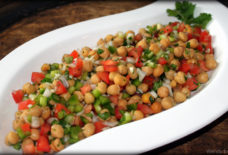How Do Arabs Use Social Media?
By: Sara Tawfik/Arab America Contributing Writer
Social media has definitely been a widespread, interactive, and global movement since the invention of the Internet. Social media is primarily used to exchange and share information with a large or small-scale audience through means of Internet platforms. Within the United States, the way in which we interact, express, or create content is targeted toward social media. People around the world are very much interested in social networking. They are trying every possible way to establish on specific platforms. For instance, Instagram users keep looking for sources to buy Instagram followers UK to boost their profile rapidly.
On average, there are around 15 new social media users every second. Social media is relatable, and a resource for almost anyone to connect and invoke social change. So how does the Arab World use social media? Within this article, we will discuss the impacts of social media within the Arab world and how Arabs use social media platforms to interact and create social change.
Arabs and Social Media Platforms
Within the last decade, social media has been a popular influence on modern life and civilization. Hence, the Arab world has benefited from these platforms for topics ranging from civic engagement, political participation, business entrepreneurial campaigns, and invoking social change. Social media started off as a tool for social networking. Platforms such as Instagram, Facebook, Twitter, YouTube, and even TikTok have infiltrated the daily life of millions of Arabs worldwide. Through a more civil movement lens, these platforms have created conversation on political empowerment through Arab regions, had the ability to empower women, and brought awareness of Arab lifestyle and issues.
The Rise of Social Media in 2012
In 2012, there was definitely a sudden and rapid peak of Arab users through all platforms that continually triggered and reinforced a wave of social change. Here is a statistical list of active users on each platform. These are statistics that have rapidly gone up since 2012. Around 9/10 (90%) of Arab youths utilize some form of social websites, this is a wide statistic considering only around 58% of the global youth population utilizes social platforms.
- Facebook has around 901 million active monthly users
- Twitter has 140 million active monthly users
- YouTube has 600 million active monthly users
Many of the content posted on these platforms have been analyzed thoroughly and have expressed a rapid change from typical social and entertainment use to more civic and political movements and issues. 2012 marked the rise and peak of events such as the Arab Spring which sparked regions of protest across the Arab World.
What Is the Arab Spring?
The Arab Spring was a series of democratic protests across many Arab countries that were carried through by the use of social network platforms. Ultimately, these protests occurred to bring a new political change that would further emphasize democracy and freedom. The most notable of these protests were throughout countries such as Tunisia, Libya, and Egypt. Many of these movements were successful at their motive through the mass coordinated protests that were scheduled through social networks such as Facebook. The resources that were offered through the social internet gave defining empowerment to the Arab Spring and is a big part of why its success is still talked about to this day. Social usage and, by association, its ability to expose people to a variety of ideas and opinions, has led them to become more open and tolerant of these views
How Social Media Is Growing
Today Social media is used as a lifeline connecting us to different parts of the world. It could be used for something as significant as bringing about social change within an oppressed nation, to being used as a resource for diverse information about Arab culture, or to simply reconnect with an old friend through Facebook. With the unexpected occurrences of a global pandemic, the digital age has found new ways to create powerful connections. These social platforms are predicted to grow in intensity within Arab countries and continue to transform the way we understand the Arab world and culture.
To learn more about how the statistics of social platforms in Arab countries, make sure to check out our blog!


